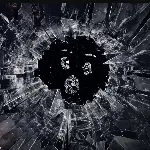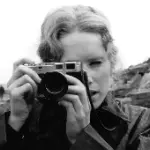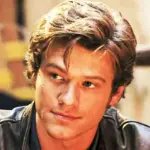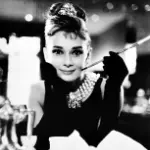Christopher Nolan's film trailers are magical: you have no idea what the trailer is about. When this happens in someone else's movie trailer, the average viewer might think, "I can't understand it so I won't watch it." However, this is a Christopher Nolan trailer. In that case, it gives you an excellent psychological suggestion: "I want to go to the cinema to see how difficult this movie can be!"
Christopher Nolan's films are different from other challenging art films and art films. He likes to hide many puzzle clues in his films. He weaves puzzles for the audience with deep plots, stunning images, and outstanding music while writing answers to the puzzles in apparent places. In "Inception," Ariadne, played by Elliot Page, is a "dream maker" who plays a crucial role in creating dream mazes for the team. The name Ariadne is derived from the daughter of a king in Greek mythology, who fell in love with Theseus, who was going to kill the Minotaur in the maze, and gave Theseus a thread to help him out of the labyrinth. Therefore, in Greek mythology, Ariadne is also called the "mistress of the maze." Christopher Nolan also specially arranged a scene of hand-drawn mazes for Ariadne in "Inception," using a thread to draw the exit of the paper maze, which coincides with her image in Greek mythology.
This is why everyone says, "Everything in Christopher Nolan's movies is intentional" and "his movies must be watched two or three times." All the clever ideas and hints he constructs in the movie can make the audience repeatedly think and ponder when they leave the cinema, are on their way home, are taking a shower, and are eating. This kind of viewing experience brought about by the aftershocks of the movie is the charm of Christopher Nolan's films.
Christopher Nolan's movie, "Tenet," has taken this viewing experience to the extreme, making people amazed at his meticulous attention to detail in the movie. In the entire film, dialogue, and character names that he intentionally lets the audience see and repeat multiple times, those grand scenes, artistic works that are deliberately shot, and symbols are all mysteries laid down by Christopher Nolan for the audience. In the trailer for "Tenet," Christopher Nolan gave two critical clues: first, it is the English title of the movie "Tenet" itself, which is both a puzzle and an answer. It is the name of the spy organization "TENET" in the film. It is also a palindrome word with symmetrical letters. It can be written as the same word in forward and backward spellings. The second clue is a line of dialogue from the protagonist, hinting to the audience: "It's not time travel; it's time inversion."
Everything still has to start with a stone that Christopher Nolan has never shown to everyone in the movie. This stone is called the "SATOR square (Quadrato del Sator)" and originated in Western Europe. The inscription is mainly in Latin and consists of five words: SATOR, AREPO, TENET, OPERA, and ROTAS. These five words correspond to the Russian Sator, the painter Arepo, who imitated Francisco de Goya's paintings, the spy organization Tenet, the exploded theatre Opera, and the company Rotas, where Sator stores artworks in the free port. Although Christopher Nolan has never directly shown this stone in the movie, the meaning of the stone is interspersed throughout the film. For many years, this stone has been a mystery that archaeologists, linguists, and historians in Europe have been unable to solve. It has been found in various ruins in Western Europe and can be traced back to Pompeii before its destruction.

The inscription on the stone is written in palindrome. The first line, SATOR, is spelled backward as the last line, ROTAS, the second line, AREPO, is spelled backward as the penultimate line, OPERA, and the middle TENET is a palindrome word itself. Sator, the cruellest villain in the movie, is the source of all mysteries and the initiator of the world's destruction. Whether you read it forwards or backward, Sator is always the first word on the stone, meaning "ploughman" or "creator" in Latin, corresponding to Sator's collection of resources around the world and the creation of portals.

Arepo is an artist who forged Francisco de Goya's paintings in the movie. Although he never appeared from beginning to end, his name was mentioned several times in the dialogue between the protagonist, Crosby, and Kat. AREPO is the most mysterious word on the stone because it has never appeared in Latin records. One speculation is that it can be extended to the Latin word "arepennis," meaning "a small piece of land." TENET means "to hold" or "to possess" in Latin; OPERA can be interpreted as opera, opera house, or work. Finally, ROTAS can be extended to "route," meaning "rotation" or "wheel," which is the name of Sator's company, la rotas in the movie, and also the location of the first appearance of the cylindrical portal in the movie.
The inscription on the stone can be interpreted as "the creator holds the rotation of the heavens." Sator is the subject of the entire inscription on the stone and the essential character in the movie. He established rotas, ignited opera, and met the protagonist through Arepo's paintings. All events are intertwined, all words are combined, and they are arranged into the movie title: "Tenet." The combination of TENET in vertical and horizontal rows is just a cross, and in ancient Rome, the cross was a symbol of the sun god. The cross can also be seen as a cross, and in some cultures, the cross has the effect of exorcising demons. In the movie, TENET is used as the name of the organization of the righteous side, in contrast to evil.
The secret of the stone does not stop there. The arrangement of letters shows that the rocks excavated worldwide have a common point: the inscription is written in strict accordance with the specifications. Each letter must be the same size, and the spacing between all letters must be equal. All words must be combined into a square. The palindrome writing method also echoes the most important theme and expression method of "Tenet": reversal and retrospection.


As mentioned earlier, the Russian Sator is the most crucial character in the entire movie and the subject of the inscription on the stone. Even if the stone is turned upside down, the first word in the first line of the stone is always Sator. Then, in reverse, Rotas, as the inverted word of Sator, also plays a vital role in the movie.
Rotas, in the entire movie, refers not only to the name of Sator's company but also as a symbol of the "wheel," which runs through the whole movie. Christopher Nolan opened the film with the National Opera of Ukraine battle, using a specific angle to let the audience see how the protagonist searched for explosives around the circular corridor and stands. The same shooting technique also appears when the protagonist and Neil escape from the Rotas company. The camera deepened the visual effect of their chase around the corridor as if running in a narrow circular maze. The circular portal first appears in this scene, allowing people to complete the time reversal as a revolving door.
Earlier in the film, there was a scene that may not have been fully understood at the time but now appears to be a form of foreshadowing. In this scene, the protagonist, Neil, and the pilot were discussing the crime plan on the street in Oslo. The camera was positioned at an upward angle, circling them, symbolizing the turning of the wheel of fate. Later in the film, in the second half, the character who explains the principle of time inversion to the protagonist is named "Wheeler," a term referring to someone who makes or deals with wheels, further emphasizing the theme of fate and the manipulation of time.


The National Opera of Ukraine is located in Linnahall, Tallinn, Estonia, which was initially an activity venue for the 1980 Moscow Summer Olympics, with a music hall inside. Linnahall was abandoned ten years ago. Christopher Nolan was attracted by the appearance of Linnahall, considering it very suitable for the shooting needs of "Tenet," so he spent a lot of effort cleaning up and repairing Linnahall and restoring the lighting equipment, seats, and carpets in the music hall. Linnahall is a typical brutalist architecture; this unadorned and simple concrete architecture is also called brutalist architecture. Because it emphasizes practicality, low cost, and visual unity and coherence, it is trendy in Eastern Europe and former Soviet countries after World War II. Brutalist architecture looks like an unfinished and unadorned building, with a rough surface and a vast shape, giving people a cold and oppressive feeling. Christopher Nolan also uses this design language in the design of the portal. Unlike the portals full of technological sense in other science fiction movies, the concrete portal in "Tenet" looks heavy and rough, more like a product of tribal culture.

Some people believe that the oversized shape of brutalist architecture is a manifestation of authoritarianism, using such oppressive shapes to intimidate potential enemies. The unprocessed concrete building surface will be stained with water stains, moss, discoloration, and decay after exposure to sun and rain, affecting the beauty of cities and communities and has been disliked by many people. Brutalist architecture and the fate of Linnahall have been abandoned or demolished like Linnahall.
In addition to Linnahall, the desert base where the final battle broke out in the movie, is also a brutalist architecture group located in the abandoned desert ghost town of Eagle Mountain, and based on the existing architectural group, Christopher Nolan also led his team to build many full-size brutalist architecture, expanding the architectural group while maintaining the atmosphere of the ghost town's decay. The two brutalist architectural groups in the movie play a leading role in the fire scene dominated by Sator's conspiracy. They point to the cold-blooded villain Sator, showing the positive and negative aspects of his life: he is a wealthy businessman who owns a luxury private yacht, dines in a luxurious restaurant, operates high-end artworks, and spends his honeymoon on the picturesque coast, but he is also cruel, buying and selling weapons, and uses any means to achieve his goals. Brutalist architecture is pervasive in the Siberian region, so to a certain extent, it also corresponds to his Russian identity in the movie.

Finally, let's talk about the painting: Why did Christopher Nolan choose the fake works of Francisco de Goya and give them to Kat, the wife of the Russian Sator? In an interview with him and the Tate Gallery, Christopher Nolan once said that his favourite painter was Francis Bacon. The gloomy and distorted emotions and brushstrokes in Bacon's works inspire the Heath Ledger version of the Joker makeup he created in "The Dark Knight."

Francisco de Goya was a famous painter in 18th-century Spain and created many realistic works during the Spanish revolutionary movement, depicting the heroic behaviour of the Spanish people against European tyranny. As an essential prop to drive the plot, the director never gave a frontal shot of the fake works of Francisco de Goya, which was first stuffed into a shopping bag by Crosby and handed to the protagonist. Then, when Kat picked up the painting and carefully identified it, it still couldn't let the audience see what kind of exquisite Francisco de Goya's fake works were. Until Kat and Sator quarrelled and Sator questioned the relationship between Kat and the protagonist, the waiter brought up a dish. He handed it to Kat, uncovering the dish cover like stripping off her fig leaf—a fake work of Francisco de Goya, a sketch of a female figure lying on a plate. Kat took a cold breath, and there was nowhere to hide the lie.
When we study Francisco de Goya, the women in Francisco de Goya's works are always an unavoidable topic. Francisco de Goya lived during the French Revolution, and the roles of women in cities and upper-class society began to change. He depicted the various states of free women in society then, recording many women who walked out of the hidden corners of their homes. The most controversial painting is "The Naked Maja (Spanish: La maja desnuda)," which differs from most classical nude oil paintings. The Maja in Francisco de Goya's painting lazily leans on a cushion, looking like she is showing off her body and desires. This work of Francisco de Goya is considered to allude to the romantic affairs between the palace nobles at that time. In Francisco de Goya's other palace paintings, the queen's majesty always covers the king beside her.
The women in Francisco de Goya's paintings represent openness, power, and romance, which the tyrant Sator cannot tolerate. He controls his wife Kat with violence and means until Kat receives this painting that changes her fate. Elizabeth Debicki, who plays Kat, looks charming and maintains a classical beauty with a sense of distance. Another actor who shines in the movie is Robert Pattinson. Some handsome male actors may be dragged down by their appearance because they can only play thin, good-looking male characters, which is also my impression of Pattinson in the past. Now, seeing his acting skills in the movie, just sitting there and ordering a Coke can create a curiosity and distance that people dare not get close to. It is said that Pattinson himself does all the fights and car stunts in the movie.
Christopher Nolan has demonstrated through his work that the experience of watching exceptional movies in theatres cannot be replaced by streaming media. His films are so captivating that viewers are compelled to watch without skipping scenes, ensuring they don't miss any details captured on screen. People are often drawn to watch his films multiple times in a dark cinema, allowing them to fully immerse themselves in the movie, experiencing every word and frame of the film.















































Share your thoughts!
Be the first to start the conversation.